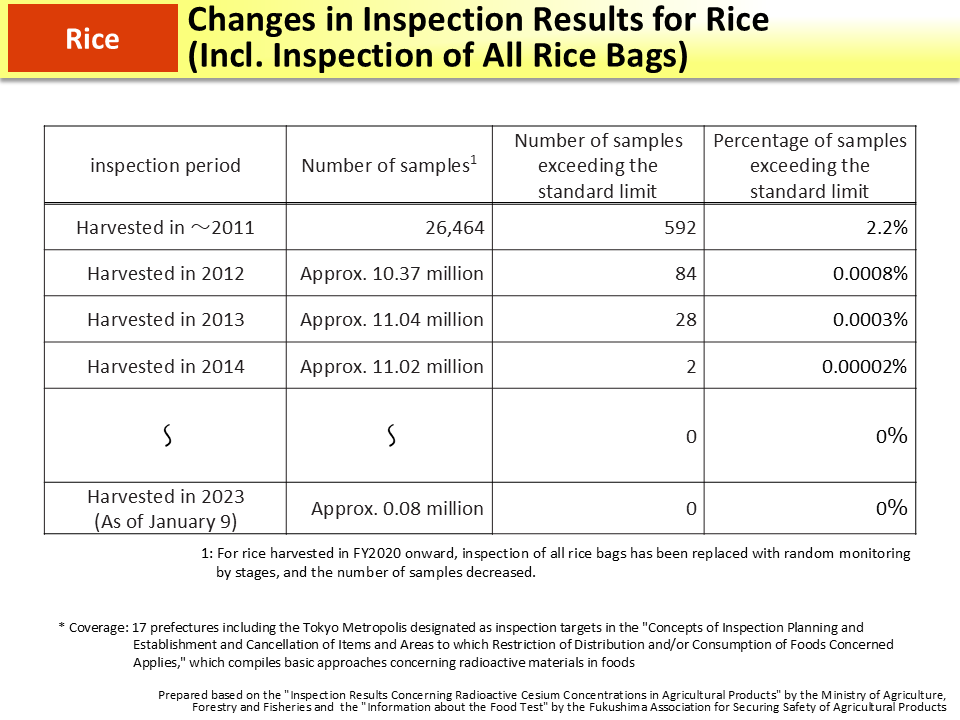Changes in Inspection Results for Rice (Incl. Inspection of All Rice Bags)
The production and distribution of rice are managed through measures to inhibit radioactive cesium absorption by the use of potassic fertilizer (p.71 of Vol. 2, “Measures for Reducing Transfer of Radioactive Materials to Crops (2/5) - Measures to Inhibit Radioactive Cesium Absorption through Potassic Fertilization -”) and inspection of all bags of harvested rice. In Fukushima Prefecture, planting has been restricted and measures to inhibit radioactive cesium absorption have been taken at Areas under Evacuation Orders, etc. and distribution of rice has been strictly controlled through inspection of all rice bags since FY2012. However, for rice harvested in FY2020 onward, inspection of all rice bags is replaced with random monitoring, except for rice harvested in former Areas under Evacuation Orders, etc1, and the number of samples decreased significantly (p.77 of Vol. 2, “Radioactivity Inspection of All Rice Bags by Fukushima Prefecture”).
Rice containing radioactive cesium at a level exceeding the standard limit decreased year by year, and there has been none since FY2015 (as of the end of December 2023). This standard limit refers to 100 Bq/kg, which has been applied since April 2012 (in FY2011, provisional regulation values were applied, but tabulation is based on the current standard for the purpose of comparison with the results in and after 2012).
- Former Areas under Evacuation Orders, etc.: Tamura City, Minamisoma City, Hirono Town, Naraha Town, Tomioka Town, Kawauchi Village, Okuma Town, Futaba Town, Namie Town, Katsurao Village, Iitate Village, and Kawamata Town (former Yamakiya Village)
- Included in this reference material on March 31, 2013
- Updated on March 31, 2024

